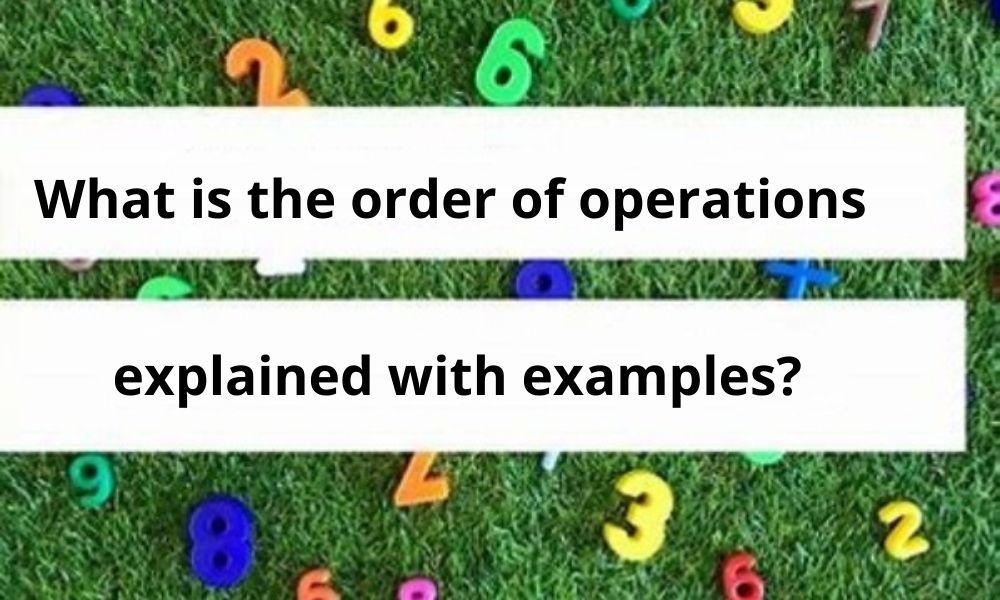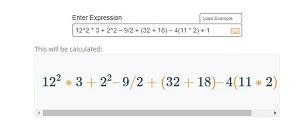
What is the order of operations explained with examples?
In mathematics, order of operations is widely used to solve various problems of algebra. It is a general technique to get a similar result of the arithmetic expression. It is used all over the world to avoid wrong results of the given math expressions.
The order of operations is a well-known technique to solve mathematical expressions. In this article, we’ll go through a well-known order of operation rule with a lot of examples.
What is the order of operations?
In mathematics, a rule that tells the correct sequence of steps for solving a mathematical expression is known as the order of operations. There are two well-known rules to solve math expressions.
- PEMDAS
- BODMAS
In western countries, the PEMDAS rule is applied while in Asian countries the BODMAS rule is used. Both rules proved the accurate way to calculate the sequence of the arithmetic operations. Let us discuss both rules to find the correct order of operations briefly.
- PEMDAS
PEMDAS stands for Parentheses “( )”, exponent “^”, multiplication “x”, division “/”, Addition “+”, and subtraction “-”. PEMDAS is a general rule to find the correct order of operations by solving the Parentheses “( )”. Then solve the exponent “^” terms present in the math expression.
After that solve multiplication “x” and division “/” from left to right. In the last solve the Addition “+” and the subtraction “-” from left to right. By following these steps, you can get an accurate result.
If the math expressions have more than one same arithmetic symbol, exponent, or parentheses solve the leftmost symbol first and then calculate the next similar symbol. This rule is widely used all over the world, especially in western countries.
You can use an order of operations calculator to get the result according to the above rule.
Also Read : NTSE Mathematics, SIGMA Notations, Online Math Learning
- BODMAS
BODMAS rule stands for Brackets, Order (exponent “^”), Division “/”, multiplication “x”, Addition “+”, and subtraction “-”. BODMAS rule is another method to solve the problems of math expression in an accurate order.
In this rule, solve the brackets first of the math expression. The brackets can be Parentheses “()”, curly brackets “{}”, or square brackets “[]”. After calculating the brackets, solve orders or powers terms present in the given expression.
Then solve division “/” terms, multiplication “x” terms, Addition “+” terms, and in the end solve the subtraction “-” terms. This rule is widely used in Asian countries to get similar results of math expressions.
How to solve the order of operations?
The order of the operations can be calculated easily by using PEMDAS and the BODMAS rules. Follow the below steps to calculate the order of operations by using these two rules.
- First of all, solve the parentheses “()” or brackets.
- Then solve the order or exponents.
- Calculates the multiplication and division terms from left to right.
- Calculates the addition and subtraction terms from left to right.
Following are a few examples solved by using PEMDAS and BODMAS rules.
Example 1: By PEMDAS rule
Solve 122 * 3 + 22 – 9/2 + (32 + 18) – 4(11 * 2) + 1 by using the PEMDAS rule.
Solution
Step 1: First of all, write the mathematical expression.
122 * 3 + 22 – 9/2 + (32 + 18) – 4(11 * 2) + 1
Step 2: Solve the parentheses first.
122 * 3 + 22 – 9/2 + (50) – 4(11 * 2) + 1
122 * 3 + 22 – 9/2 + 50 – 4(22) + 1
122 * 3 + 22 – 9/2 + 50 – 88 + 1
Step 3: Now solve the exponent terms.
(12 * 12) * 3 + 22 – 9/2 + 50 – 88 + 1
144 * 3 + (2 * 2) – 9/2 + 50 – 88 + 1
144 * 3 + 4 – 9/2 + 50 – 88 + 1
Step 4: Solve the multiplication and the division terms from left to right.
432 + 4 – 9/2 + 50 – 88 + 1
432 + 4 – 4.5 + 50 – 88 + 1
Step 5: Now solve the addition and subtraction terms from left to right.
436 – 4.5 + 50 – 88 + 1
431.5 + 50 – 88 + 1
481.5 – 88 + 1
393.5 + 1
394.5
Step 6: Write the given math expression with the result.
122 * 3 + 22 – 9/2 + (32 + 18) – 4(11 * 2) + 1 = 394.5
You can also use a PEMDAS calculator to avoid such a large numbers of steps. Follow the below steps to use this tool.
Step 1: Write the math expression into the input box.

Step 2: Hit the calculate button to get the result.
Step 3: The result will show below the calculate button.
Step 4: Press the show more button to view the solution with steps.
Example 2: By the BODMAS rule
Solve 11 * 33 + 21 – 92/3 + (12 + 18) – 2(4 * 2) + 8 by using the BODMAS rule.
Solution
Step 1: First of all, write the mathematical expression.
11 * 33 + 21 – 92/3 + (12 + 18) – 2(4 * 2) + 8
Step 2: Solve the brackets first.
11 * 33 + 21 – 92/3 + (30) – 2(4 * 2) + 8
11 * 33 + 21 – 92/3 + 30 – 2(8) + 8
11 * 33 + 21 – 92/3 + 30 – 16 + 8
Step 3: Now solve the order or power terms.
11 * 33 + 21 – 92/3 + 30 – 16 + 8
11 * (3 * 3 * 3) + 21 – 92/3 + 30 – 16 + 811 * (27) + 21 – (9 * 9)/3 + 30 – 16 + 8
11 * 27 + 21 – 81/3 + 30 – 16 + 8
Step 4: Solve the division and the multiplication terms from left to right.
11 * 27 + 21 – 81/3 + 30 – 16 + 8
297 + 21 – 81/3 + 30 – 16 + 8
297 + 21 – 27 + 30 – 16 + 8
Step 5: Now solve the addition and subtraction terms from left to right.
297 + 21 – 27 + 30 – 16 + 8
318 – 27 + 30 – 16 + 8
291 + 30 – 16 + 8
321 – 16 + 8
305 + 8
313
Step 6: Write the given math expression with the result.
11 * 33 + 21 – 92/3 + (12 + 18) – 2(4 * 2) + 8 = 313
Summary
Now you can solve any problem related to the order of operation either by the PEMDAS rule or the BODMAS rule. In this article, we have discussed both rules along with the example of each.








